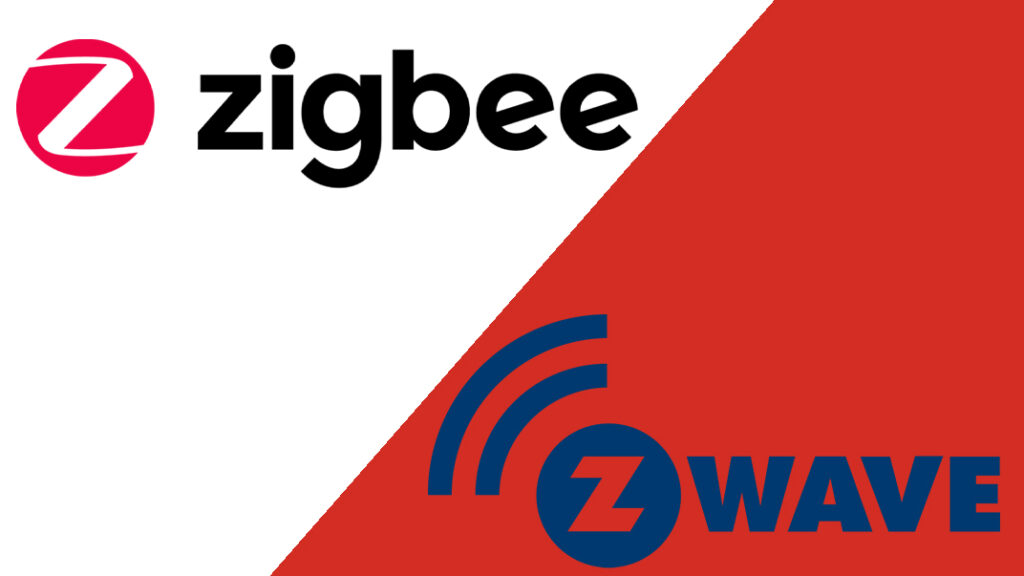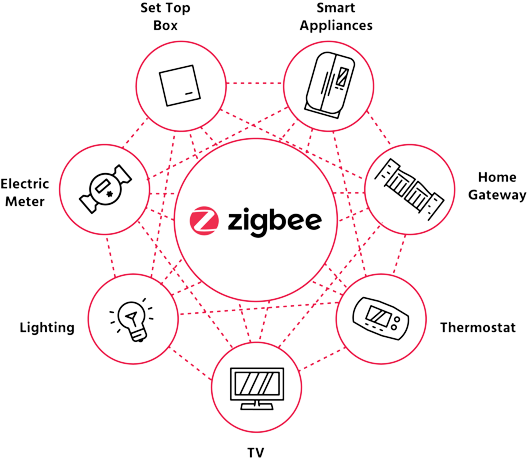Z-Wave vs Zigbee: Unveiling the Best Wireless Network Solution

In the era of smart homes and IoT devices, wireless networks have become an indispensable part of our lives. They are the invisible threads that connect our devices, enabling seamless communication and automation. Two such prominent wireless technologies that have been making waves in the market are Z-Wave and Zigbee. This article aims to provide a comprehensive Z-wave vs Zigbee comparison between these two, helping you understand their functionalities, strengths, and weaknesses.
Understanding Wireless Networks
Wireless networks, as the name suggests, are networks where devices communicate without the need for physical cables or wires. They use radio waves or infrared signals to transmit data, providing a level of convenience and flexibility that wired networks can’t match. This has made them an integral part of our daily lives, from connecting our smartphones to the internet to controlling smart home devices.
The advent of wireless networks has revolutionized the way we interact with technology. It has enabled the creation of a myriad of devices and applications that have transformed various sectors, including healthcare, transportation, and home automation. For instance, in a smart home, wireless networks allow devices like thermostats, lights, and security systems to communicate and work together seamlessly.
In the realm of wireless networks, two technologies have emerged as popular choices for smart building and IoT applications: Z Wave and Zigbee. Both of these technologies use mesh networking, where each device in the network can communicate with others to relay information. This creates a robust and reliable network where the failure of one device doesn’t disrupt the entire network.
Z-Wave and Zigbee, while similar in their use of mesh networking, have distinct features and specifications that make them suitable for different applications. Z-Wave, for instance, operates at a lower frequency and has a higher range, making it ideal for devices that are spread out over a large area. Zigbee, on the other hand, can support a larger number of devices and is known for its low power consumption, making it suitable for battery-powered devices.
Understanding the nuances of these wireless technologies is crucial when deciding which one to use for your specific needs. The following sections will delve deeper into the specifics of Z-Wave and Zigbee, providing a comprehensive comparison of their features, benefits, and drawbacks.
Z-Wave: An Overview

Z-Wave, a wireless communication protocol developed in the early 2000s, has been a popular choice for home automation systems. Its key features include low power consumption, high compatibility with various devices, and a robust mesh network that ensures reliable communication.
Pros and Cons of Z-Wave
| Pros | Cons |
|---|---|
| High device compatibility | Higher cost |
| Robust mesh network | Limited to 232 devices |
| Low power consumption | Lower data rate |
Zigbee: An Overview

Zigbee, on the other hand, is an open global standard for wireless communication designed to use low-power digital radio signals for personal area networks. It is widely used in applications that require a low data rate, long battery life, and secure networking.
Pros and Cons of Zigbee
| Pros | Cons |
|---|---|
| High network flexibility | Requires a Zigbee coordinator |
| Supports more devices | Interference issues |
| Secure networking | Compatibility issues |
Z-Wave vs Zigbee: A Comparative Analysis
When it comes to choosing a wireless technology for your smart home or IoT project, the decision often comes down to Z-Wave and Zigbee. Both are robust, reliable, and widely used, but they have distinct features and specifications that make them suitable for different applications. Let’s delve deeper into a comparative analysis of these two technologies.
Technical Specifications
Z-Wave operates at a frequency of 908.42 MHz in the US and Canada, while Zigbee operates at 2.4 GHz globally. The lower frequency of Z-Wave means it can penetrate walls and other obstacles better than Zigbee, giving it a longer range. However, Zigbee’s higher frequency allows it to support a larger number of devices and transmit data at a faster rate.
Key Features
Both Z-Wave and Zigbee use mesh networking, where each device in the network can communicate with others to relay information. This creates a robust and reliable network. However, Z-Wave supports up to 232 devices in a network, while Zigbee can support thousands. Zigbee also has the advantage of being an open standard, which means it has a wider range of compatible devices.
Applications
Z-Wave is commonly used in home automation systems due to its high compatibility with various devices and its robust mesh network. Zigbee, on the other hand, is often used in industrial IoT applications that require a low data rate, long battery life, and secure networking.
Device Compatibility
Z-Wave has high device compatibility, but all Z-Wave devices must be certified by the Z-Wave Alliance, which can limit the range of available devices. Zigbee, being an open standard, has a wider range of compatible devices, but this can sometimes lead to compatibility issues between devices from different manufacturers.
Network Range and Performance
Z-Wave has a range of up to 100 meters in open air, while Zigbee’s range is about 20 meters indoors. However, both technologies use mesh networking, which means the range can be extended by adding more devices to the network. In terms of performance, both technologies are reliable and efficient, but Z-Wave’s lower frequency gives it an edge in penetrating walls and other obstacles.
Security Features
Both Z-Wave and Zigbee take security seriously. Z-Wave uses AES128 symmetric encryption, while Zigbee uses AES128 encryption with additional security layers. However, Zigbee’s security is sometimes considered more robust due to its use of link keys for device authentication.
Power Consumption
Zigbee is known for its low power consumption, making it ideal for battery-powered devices. Z-Wave also has low power consumption, but it is generally higher than that of Zigbee.
Ease of Setup and Use
Both Z-Wave and Zigbee are relatively easy to set up and use. However, Zigbee requires a Zigbee coordinator to set up the network, while Z-Wave can be set up with any Z-Wave controller.
Detailed Comparison Chart for Z wave vs Zigbee:
| Feature | Z-Wave | Zigbee |
|---|---|---|
| Operating Frequency | 908.42 MHz (US, Canada) | 2.4 GHz (Global) |
| Network Type | Mesh Network | Mesh Network |
| Maximum Devices Supported | 232 | Thousands |
| Standard | Proprietary | Open Standard |
| Common Applications | Home Automation | Industrial IoT, Home Automation |
| Device Compatibility | High (Certification required) | High (Potential compatibility issues due to open standard) |
| Range | Up to 100 meters (Open air) | About 20 meters (Indoors) |
| Security | AES128 Symmetric Encryption | AES128 Encryption with additional security layers |
| Power Consumption | Low | Very Low |
| Ease of Setup | Easy (Any Z-Wave controller can set up the network) | Easy (Requires a Zigbee coordinator to set up the network) |
In conclusion, both Z-Wave and Zigbee have their strengths and weaknesses. Your choice between the two will depend on your specific needs and requirements.
Case Studies
Real-world applications of Z-Wave and Zigbee technologies provide valuable insights into their practicality, performance, and user experience. Here are a couple of case studies that highlight their use in different scenarios.
Case Study 1: Z-Wave in Home Automation

A homeowner in San Francisco wanted to transform his traditional home into a smart home. He chose Z-Wave technology due to its high compatibility with various devices and robust mesh network. The home automation system included smart thermostats, lights, locks, and security cameras, all connected via a Z-Wave network.
The homeowner was able to control all these devices through a single app, creating customized scenes and schedules. For instance, he set a scene where the lights would automatically dim, the thermostat would adjust the temperature, and the security system would activate when he left for work. The Z-Wave network ensured reliable communication between the devices, and the homeowner was pleased with the convenience and efficiency of his smart home.
Case Study 2: Zigbee in Industrial IoT

A manufacturing company in Germany wanted to improve its production efficiency and reduce downtime. They decided to implement an Industrial IoT (IIoT) system using Zigbee technology. The system included various sensors and devices to monitor machine performance, environmental conditions, and energy consumption.
Zigbee’s low power consumption and secure networking made it an ideal choice for this application. The mesh network ensured reliable data transmission even in the large and complex manufacturing facility. The company was able to monitor their production in real-time, identify issues quickly, and make data-driven decisions. This led to improved efficiency, reduced downtime, and significant cost savings.
These case studies demonstrate the versatility and reliability of Z-Wave and Zigbee technologies. They show how these wireless networks can be used to create smart, connected environments that improve convenience, efficiency, and decision-making.
Expert Opinions
Silicon Labs, a leading provider of silicon, software, and solutions, states that Z-Wave is designed to meet the demands of the future smart home, hospitality, and MDUs, where increasing needs for more sensors and battery-operated devices require both long-range and low power. They highlight the best-in-class security, SmartStart provisioning, battery life of up to 10 years, full home and yard coverage, customer product-level interoperability, backward compatibility, and support for both Z-Wave Mesh and Long Range as key features of Z-Wave.
Conclusion
In the realm of wireless technologies for home automation and IoT applications, both Z-Wave and Zigbee have carved out their niches. They each offer unique advantages that make them suitable for different applications, and the choice between the two often depends on the specific needs and requirements of the user.
Z-Wave, with its robust mesh network, high device compatibility, and lower frequency, is often favored for home automation systems. Its ability to penetrate walls and other obstacles ensures reliable communication between devices, making it an excellent choice for systems spread out over a large area.
On the other hand, Zigbee, with its higher data rate, ability to support a larger number of devices, and low power consumption, is often preferred for industrial IoT applications and systems with many battery-powered devices. Its open standard allows for a wider range of compatible devices, although this can sometimes lead to compatibility issues.
However, it’s important to note that both Z-Wave and Zigbee are continually evolving, with new features and improvements being introduced regularly. As such, the landscape of wireless technologies is dynamic and subject to change.
In conclusion, both Z-Wave and Zigbee are powerful and reliable wireless technologies that have a lot to offer. Your choice between the two will depend on your specific needs and requirements, and it’s always a good idea to do thorough research and consider expert opinions before making a decision.